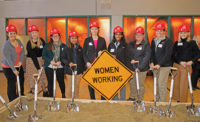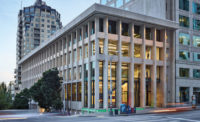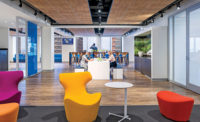1789 Massachusetts Avenue, NW, Renovation and Restoration
Washington, D.C.
Award of Merit
Owner: American Enterprise Institute
Lead Design Firm: Hartman-Cox Architects
General Contractor: Grunley Construction Co.
Civil Engineer: Bowman Consulting Group Ltd.
Structural Engineer: Silman
MEP Engineer: Affiliated Engineers Inc.
Interior Design: BHC Architects
Landscape Architect: Graham Landscape Architecture
Subcontractors: Superior Iron Works Inc. (Structural Steel); Patuxent Engineering Group LLC (Structural Shoring); Berkel & Co. Contractors Inc. (Excavation, Column Shoring and Foundations); ACECO LLC (Demolition and Abatement); Scaffold Resource LLC and HLT Consulting & Contracting Inc. (Temporary Shoring and Bracing)
When the American Enterprise Institute purchased 1789 Massachusetts Ave. on Washington, D.C.’s Embassy Row in 2013, the National Historic Landmark was 12,000 sq ft too small for the institute’s needs. Expanding the 72,000-sq-ft building to nearly 100,000 sq ft (ENR MidAtlantic 3/16 p. 18) involved reconfiguring existing floorplates, building into a courtyard and creating a new 6,000-sq-ft roof deck and terrace.
The project team’s most daring method for creating new space was adding a new sub-basement level. Building the new level below the existing basement, while preserving the building’s historic elements, required stabilizing the steel structure without cracking the facade or interior plaster. That process required complex sequencing and included removing five interior columns as well as installing the existing building’s underpinning at the interior columns and concrete underpinning piers at the perimeter before excavation.
To ensure the historic facade wasn’t damaged by movement or settlement, the team recorded automatic measurements every hour during the underpinning and excavation processes.
The $78.4-million renovation also included creating a new central core structure, installing new mechanical, electrical, fire/life safety, security and telecommunication systems. Completed in September 2016, the project gave the building modern functionality while maintaining its old-world aesthetics.
Related Article: Region’s Best Work Meets Big Challenges





